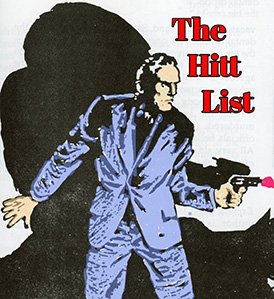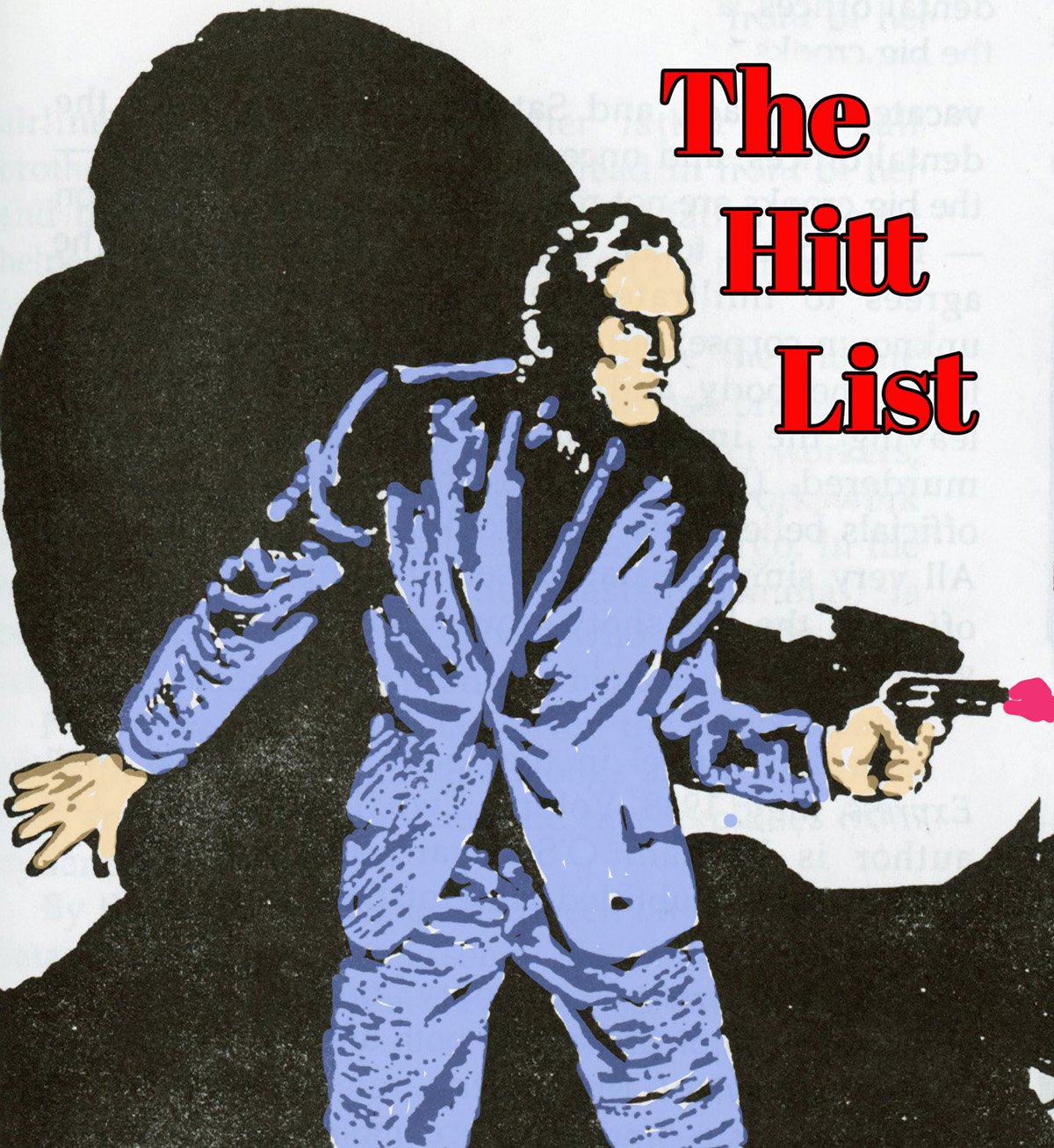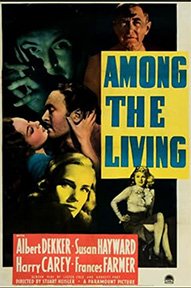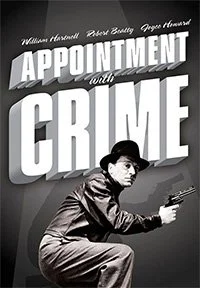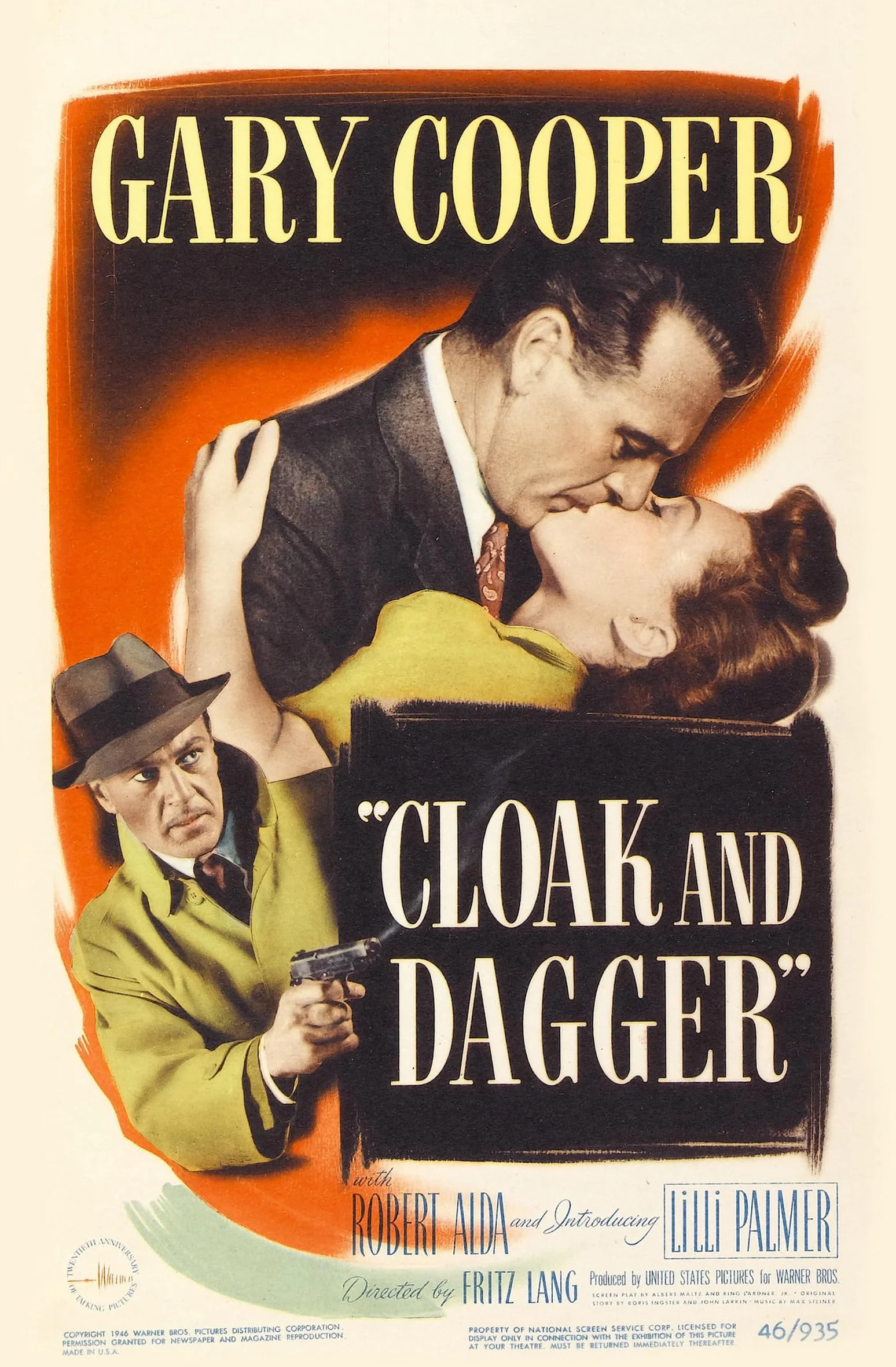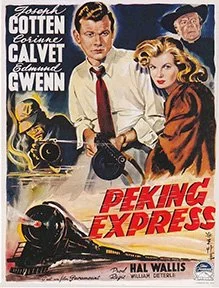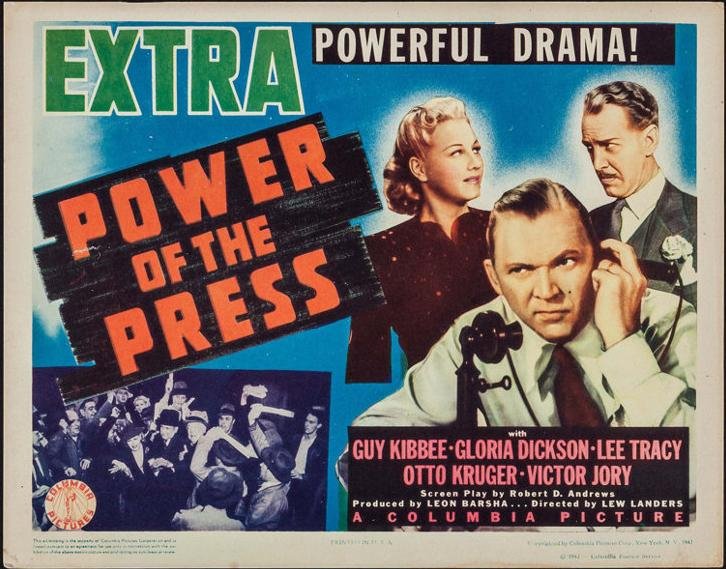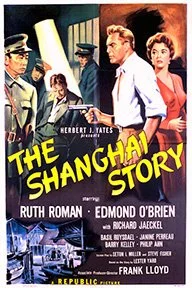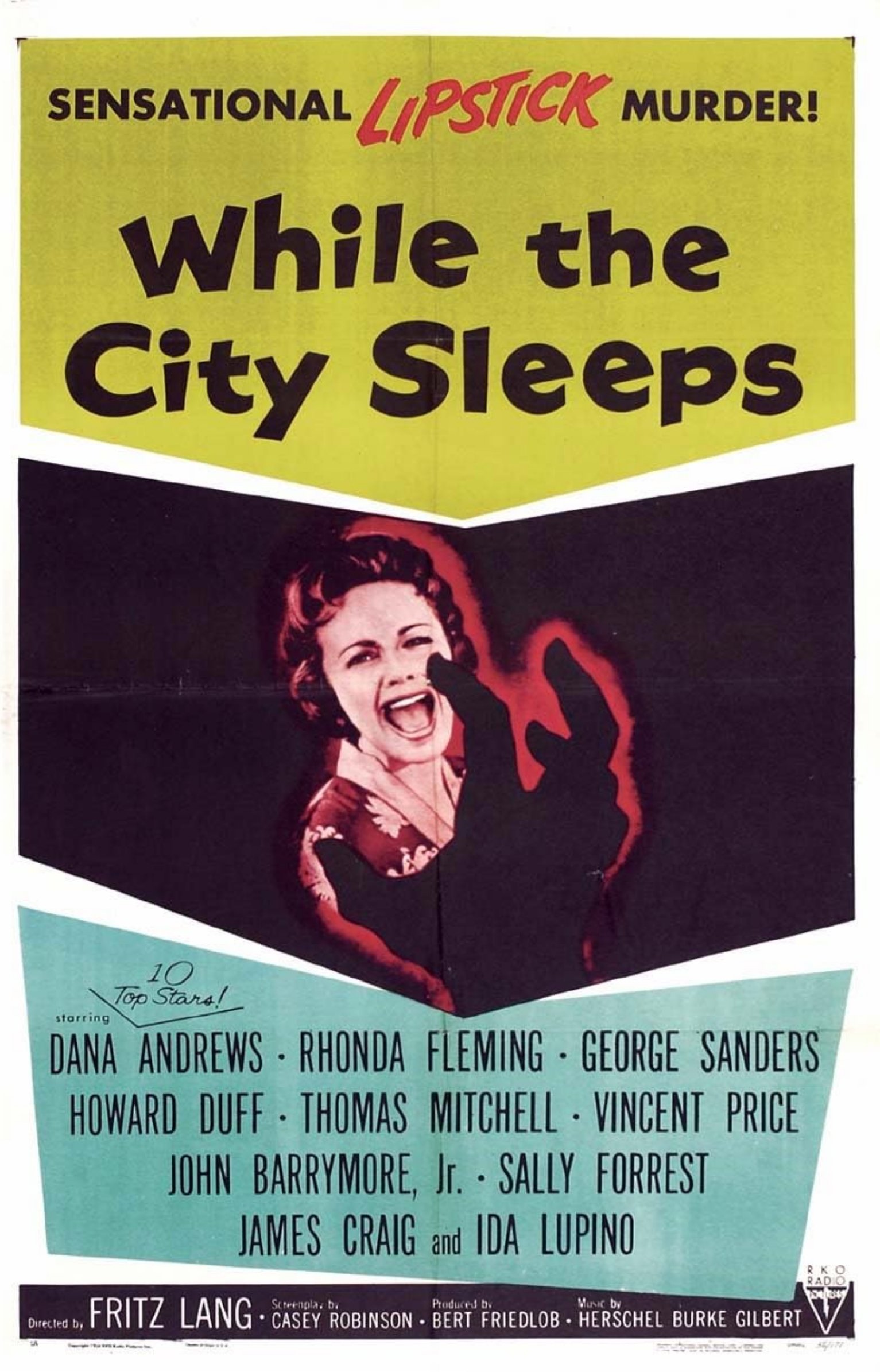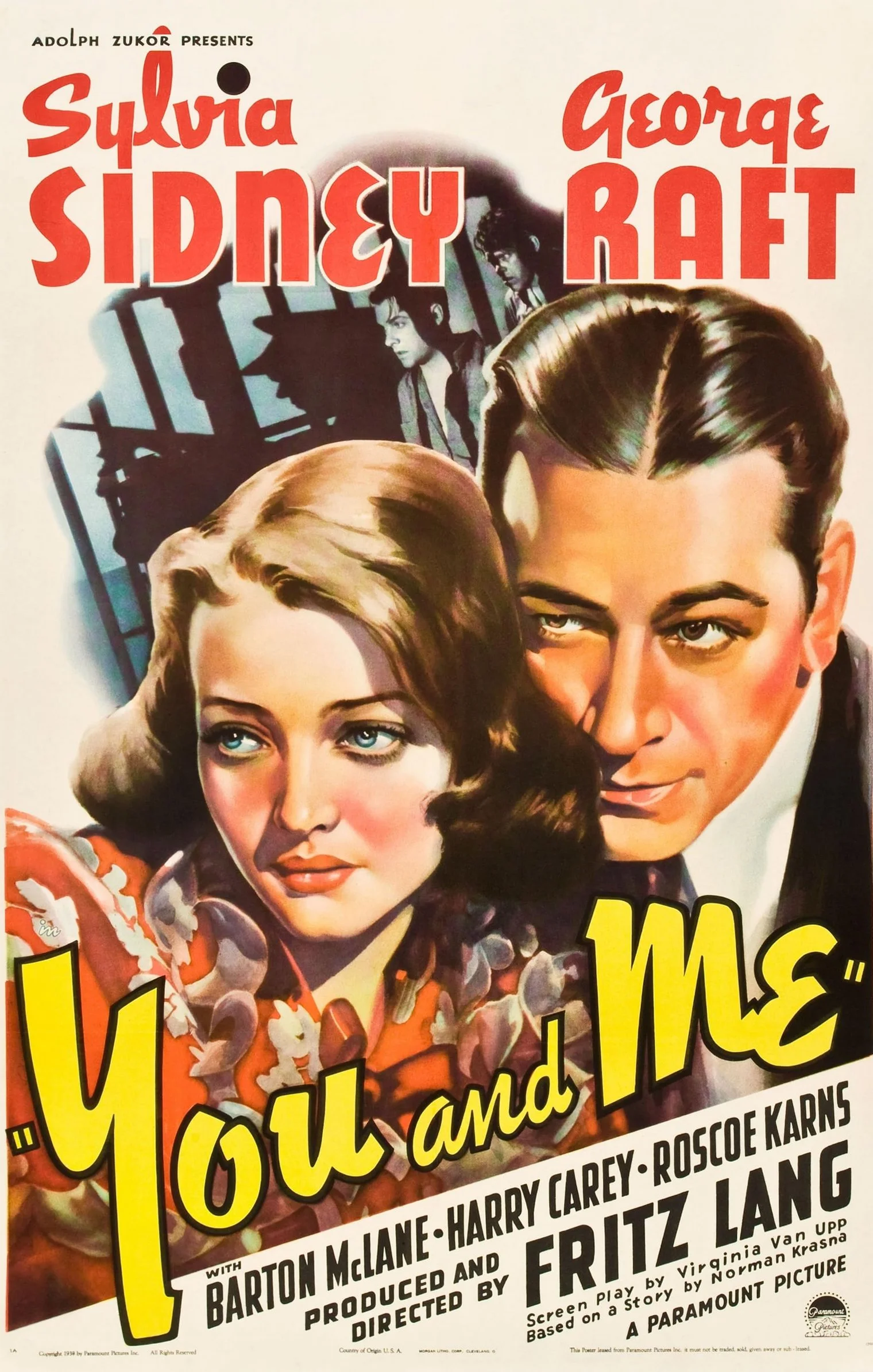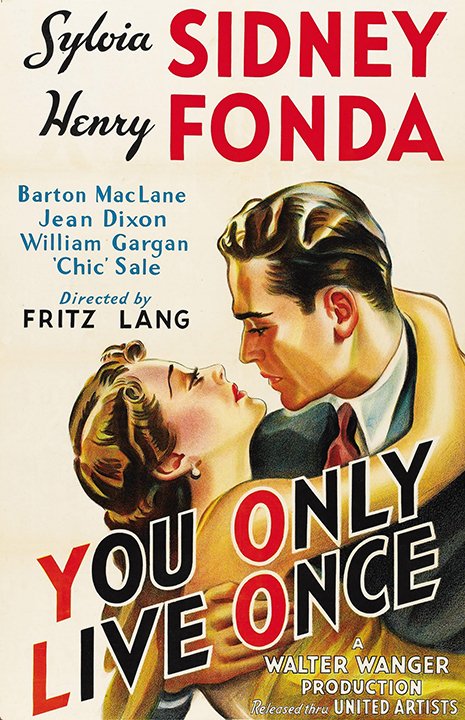HOME VIDEO REVIEWS
for 2023
LIST OF FILMS REVIEWED in 2023
Adventures of Captain Fabian, 1951
Among the Living, 1941
Appointment With Crime, 1947
Cloak and Dagger, 1946
Cry Vengeance, 1954
Last Train From Madrid, 1937
Lucky Jordon, 1937
Lulu Belle, 1948
Mississippi Gambler, The, 1953
One-Eyed Jacks, 1961
Peking Express, 1951
Samuel Fuller Storyteller, Volume One
includes
Adventures in Sahara, 1938
It Happened in Hollywood, 1933
Power of the Press, 1943
Shanghi Story, The, 1954
Silver City, 1951
While the City Sleeps, 1956
You and Me, 1938
You Only Live Once, 1937
Adventures of Captain Fabian
〰️
Adventures of Captain Fabian 〰️
ADVENTURES OF CAPTIAN FABIAN
(Republic, 1951, B & W, 100 minutes)
Directed by William Marshall, a screenplay by star Errol Flynn, Adventures of Captain Fabian was filmed in France—Villefranche substitues for New Orleans—and released by Republic Studios. The production was beset by numerous problems, including lawsuits and French laws. These complications are far more interesting than the film itself. At one stage the film was also known as Bloodline and New Orleans Adventure.
The action takes place in New Orleans in 1860. Captain Fabian (Errol Flynn) rescues a creole girl, Lea (Micheline Presle), who is unjustly accused of murder by George Brissac (Vincent Price). Another murder, a forced marriage, and betrayal follow to form a melodramatic plot.
This film is a cut above most of Republic’s offerings, but they only distributed it. They had nothing to do with its production. Still, it is among Flynn’s weaker pictures. The Los Angeles Times said of Adventures of Captain Fabian, “The audience seemed to enjoy it though there was a tendency towards laughter for scenes not especially designed for comedy.... One cannot conclude that this picture in its present shape hangs together satisfactorily.” The New York Times called the film “…yawn-provoking hodgepodge.”
The Olive Films Blu Ray has no extras.
I have not seen all of Flynn’s films (among others, I missed Cuban Rebel Girls), but of the many I have seen, this ranks among the weakest. His performance is adequate, but overall the production values as well as the script are second class.
Final Thoughts: A good one to miss.
Grade: D
Among the Living
〰️
Among the Living 〰️
AMONG THE LIVING
(Paramount, 1941, B & W, 69 minutes)
Directed by Stuart Heisler (The Glass Key), this is a good example of a low budget Film Noir. Albert Dekker in a juicy role plays twin brothers, one of whom is insane. Dekker’s performance is solid, and Harry Carey, Susan Hayward and Frances Farmer lend excellent support. Madness, murder, and mistaken identity—what can go wrong in the dark world of Film Noir. The Blu Ray is sharp. I doubt this film looked as good when it was first released. Extras from the Kino Lorber disc include trailers and an audio commentary from film scholar Jason A. Ney.
Final Thoughts: An unpretentious ’B’ film. Enjoyable
Grade: B-
Appointment with Crime
〰️
Appointment with Crime 〰️
APPOINTMENT WITH CRIME
(Melange Films, B & W, 1947, 91 minutes)
Appointment with Crime is a 1946 British crime drama directed by John Harlow and starring William Harnell as Leo Martin. a ‘smash and grab’ thief. When a robbery goes wrong, Leo is deserted by his boss and ends up with broken wrists. After serving his tiime, he gets out with only one goal—to get even. As gangster movies go, this is a decent attempt, though in no way can it match better American entries in the genre. Acting is adequate, though Hartnell can’t compare to a Bogart or Cagney. Ironic ending is satisfying. The disc from Olive Films lacks any extras.
Final Thoughts: Not up to standards of American gangster films.
Grade: C
CLOAK AND DAGGER
〰️
CLOAK AND DAGGER 〰️
CLOAK AND DAGGER
(Melange Pictures, 1946, B & W, 106 minutes)
Cloak and Dagger stars Gary Cooper as an American scientist sent by the OSS to contact European scientists working on the German nuclear weapons program. Lilli Palmer, as a member of the Italian resistance, becomes his love interest. The story was drawn from the 1946 non-fiction book Cloak and Dagger: The Secret Story of O.S.S. by Corey Ford and Alastair MacBain.
I consider Gary Cooper one of the really great American actors. I had never seen this film, and approached it with high hopes. Ten minutes into the story, I was ready to end it then and there. Cooper gives a speech about the destructive nature of modern weapons. He is so unconvincing, so forced, I didn’t believe a single word, not even ‘the’ and ‘and.’ I let the film run, and it did improve. Once he gets to Europe, action and suspense take center stage. A fight with Nazi Marc Lawrence is especially tense.
Variety noted that ‘Cooper is not altogether at ease as a counter-intelligence agent.’ Bosley Crowther in The New York Times said that ‘Mr. Lang…has not pretended to show any more than a romantic thriller….”
Last Thoughts: If you can get by the beginning, Cloak and Dagger is a spy movie that has its moments.
Grade: C+
Cry Vengeance
〰️
Cry Vengeance 〰️
CRY VENGEANCE
(Allied Artists, color, 1954, 78 minutes)Mark Stevens directed and starred in Cry Vengeance
(1954), a late entry in the film noir cycle. Vic Barron (Stevens) , a former detective, scarred physically and emotionally by the car bomb that killed his wifeand child. When released from prison after serving time for a crime he didn't commit, he seeks revenge.
Unusual for a film noir, the film mostly takes place in Ketchikan, Alaska, a perfect l hideaway for the gangsters who killed Stevens' wife and child and left him disfigured. Skip Homeier gives a solid perfiormance as the creepy sociopath who killed Barron’s wife and child. Martha Hyer lends equally effective support as the local woman who sees the decency inside Stevens' tormented character.
Stevens does an adequate job as director, although at times the lighting seems a bit too bright and harsh. As Barron, he creates a memorable character who nearly destroys his own humanity in his pursuit of vengeance.
While a good film, it does not match several earlier film noirs in which Stevens starred, especially The Dark Corner (1946) and The Street With No Name (1948).
Warning—The Blu Ray cover states the film is in color. It is not. There are no extras.
FINAL THOUGHTS: Entertaining, mainly because of Mark Stevens
Grade: C+
The Last Train from Madrid
〰️
The Last Train from Madrid 〰️
THE LAST TRAIN FROM MADRID
(Paramount, 1937,B & W, 77 minutes)
Set in the chaotic days of the Spanish Civil War, The Last Train from Madrid tells the story of seven people who struggle to board the last train for Valencia leaving at midnight. The film clearly states at the beginning it takes no sides but is only telling a story of people involved in desperate times. Paramount tried to sell the film as a Grand Hotel on wheels, but the script fell short of its goal. On the plus, the cast is well worth the effort.
A young Anthony Quinn as Captain Ricardo Alvarez and Gilbert Roland as Eduardo de Soto are both in love with a miscast Dorothy Lamour as Carmelita Castillo. Lew Ayres portrays journalist Bill Dexter, a bit of an ass until he falls for Helen Mack as Lola. Robert Cummings, Karen Morley, and Lee Bowman also have prominent roles. If you look closely, you may even see an uncredited Alan Ladd flash across the screen.
Journeyman director James Hogan (The Mad Ghoul) does his best with limited material and a second-rate cast. Although not on a Hitchcockian level, he maintains a suspenseful atmosphere.
In 1936, Paramount reported it had acquired the property as a vehicle for Cary Grant. However, Grant left the studio later that year. Had he starred, this might have been an entirely different and better film. Still, the 77 minute running time keeps the film from overstaying its welcome.
The New York Times said, the film deals "the Spanish Revolution, but merely as Hollywood has in the past regarded the turmoils of Ruritania and Zenda.” Graham Greene in a review described The Last Train from Madrid as "probably the worst film of the decade."
Trust me, there are plenty of films from that decade worse than this.
The Blu Ray disc includes a theatrical trailer and a commentary by film historian Bryan Reesman.
Final Thoughts: Hollywood hokum, but still fascinating in its own way.
Grade: C+
Lucky Jordon
〰️
Lucky Jordon 〰️
LUCKY JORDON
(Paramount, 1942, B & W, 84 mimutes)
Lucky Jordan, directed by Frank Tuttle, stars Alan Ladd in his first leading role. Helen Walker makes her film debut, and Sheldon Leonard plays one of his patterned gangster roles.
The screenplay concerns a self-centered gangster, Lucky Jordan (Ladd), who is drafted into the army. He goes AWOL and encounters German spies and a romance before realizing his loyalty lies with the US.
This is WWII propaganda done with a light touch. It is not exactly an action film, although it has its share. It is not exactly a comedy, although it does have humor. A hybrid, it works pretty well most of the time. Leonard is good as a gangster who double crosses Lucky. Ladd is Ladd. Helen Walker has one terrific scene where she plays sexy to help Ladd disarm a German.
The KL release on Blu Ray includes the theatrical trailer and an audio commentary by film historian Samm Deighan.
Final Thoughts: An enjoyable film if you don’t take it too seriously.
Grade: C+
Lulu Belle
〰️
Lulu Belle 〰️
Lulu Belle
(Melange Pictures, 1948, B & W, 87 minutes)
Lulu Belle, directed by Leslie Fenton, is a drama musical romance. A strange hybrid, the movie was based on a 1926 hit play by Charles MacArthur and Edward Sheldon. In the play, a mulatto songstress bewitches powerful men in New Orleans. Because of the Production Code, the film turned the story into a Caucasian songbird who played around on her lawyer husband. While the film offered a change of pace for Dorothy Lamour, it clunked at the box office.
The plot is melodramatic hokum. One night after the show, Broadway singer, Lulu Belle (Dorothy Lamour) and Harry Randolph (Otto Kruger), her rich suitor, are found shot and severely wounded in her dressing room. The police accuse Lulu's ex-husband, George Davis (George Montgomery), since he has served time for attempted murder of another man who got too close to Lulu.
Variety said George Montgomery “gives a nice bit of sincerity to the part.” Frankly, though he is required to perform in a few action scenes, Montgomery’s performance appears rather bland. He seems far more suited to the open range wearing six-shooters and fighting bad guys. Dorothy Lamour, who was more famous for her appearances with Hope and Crosby in the Road movies, does her best with limited means. The script lets her down as it does everyone in the film.
Final Thoughts: The Hollywood Reporter called Lulu Belle “a handsomely produced motion picture,” but it seldom rises above ‘B’ film status, despite the cast and production values.
Grade: C-
The Mississippi Gambler
〰️
The Mississippi Gambler 〰️
THE MISSISSIPPI GAMBLER
(Universal International, 1953, color, 99 minutes)
Directed by Rudolph Maté, The Mississippi Gambler stars Tyrone Power, who also produced the film. He lived only a scant five more years—he died of a heart attack while making Solomon and Sheba. He had several good film still ahead—Eddy Duchin Story, The Sun Also Rises, and Witness for the Prosecution. The Mississippi Gambler does not match the greatness of those films.
The film does have a few pluses. The Technicolor photography is sharp and appealing. Tyrone Power, Piper Laurie, and John McIntire give sturdy performances. Julie Adams does well as a secondary love interest for Power. Guy Williams who became TV’s Zorro and Dennis Weaver of Gunsmoke have supporting roles. Gwen Verdon dances at a voodoo ceremony. This was also the film debut of Anita Ekberg in an uncredited part.
The plot is a bit too pat. With his partner, "Kansas John" Polly (John McIntire), Mark Fallon (Tyrone Power), a professional gambler, intends to bring honest gambling to the Mississippi riverboats. He meets the fiery Southern Belle Angelique (Piper Laurie), and despite a hostile first encounter, they are soon drawn to each other. Duels, tragedy, and romantic complications follow until a happy ending fade-out.
If this is not among Tyrone Power’s best films, his screen charisma holds together the story. It is hard to image any other actor in the lead. A year later, 1954, the studio released a loose remake, The Gambler from Natchez, with Dale Robinson and Debra Paget in the lead roles.
The New York Times (January 30, 1953) said “The Mississippi Gambler is standard stuff….and it’s all gone with the wind. And a good thing, too.”
Final Thoughts: Unassuming, pleasant, looks great.
Grade: B-
One-Eyed Jacks
〰️
One-Eyed Jacks 〰️
ONE EYED JACKS
(Paramount, 1961, color, 141 minutes)
In his review (New York Times, March 31, 1961), Bosley Crowther called One Eyed Jacks ‘an extraordinary sort of Western film.’ Other reviewers were not so kind. Brian Garfield in Western Films: A Complete Guide calls it ‘turgid.’ But the years have been kind to Brando’s version of the Old West. Phil Hardy in The Western: The Complete Sourcebook calls the film ‘unique’ and ‘riviting.’ In Magill’s American Film Guide, V. I Huxner wrote: “In its best moments, and there are many of them, it is a classic Western full of self-awareness, visual flair, and a keen sense for the complexity of human dealings, heroic or otherwise.”
At first it seemed One Eyed Jacks might never be filmed. First, Brando fired director Stanley Kubrick and took over the job himself. Brando’s perfectionism often delayed shooting for hours. He would often wait a full day to get the right wave rolling in. He also kept overeating, putting on weight that added problems to re-shoots. Brando’s original cut was over five hours, and the studio had to trim it down to half that length.
The credits state the screenplay is based on The Authentic Death of Hendry Jones by Charles Neider. The book was simply not very good. Screenwriters Guy Trosper and Calder Willingham ignored most of the novel, which was just as well. With their screenplay, Marlon Brando, in his only time as a director, created a western like no other that captures rugged coastal and desert landscapes in gorgeous widescreen, Technicolor. He also elicits from his fellow actors nuanced peerformances.
While the film retains many of the mythological foundations of the Old West, the story is suffused with Freudian overtones. After a bank robbery, Dad Longworth (Karl Malden) double-crosses his friend and partner, Rio (Brando), leaving him to take the fall. Five years later Rio escapes from prison and, consumed by revenge, tracks down Dad, who is now living a respectable life as the sheriff of Monterey, California. Dad is married to Maria (Katy Jurado), who has a daughter, Louisa (Pina Pellicer). At first, Dad accepts his former partner’s lies when he says that he bears Dad no malice. Rio subsequently seduces Louisa. After Rio kills a man in self-defense, Dad beats him and forces him to leave. While recovering, Rio realizes his love for Louisa is stronger than his need for revenge. However, after an attempted bank robbery in which Rio is not involved, Dad intends to see Rio hang. Rio escapes and kills Dad in a gunfight. Rio and Louisa, who is pregnant, flee the town. Rio leaves her, intending to head north, but promises to return within the year.
Despite all the problems, One Eyed Jacks emerged as a tribute to Brando’s vision. It may be the most beautiful Western ever filmed. The characters are expertly drawn, and the acting of the highest caliber. Rio is certainly one of the most troubled yet one of the most romantic and appealing of all the actor’s performances.
The Criterion edition has a number of extras that include a new introduction by Martin Scorsese and video essays the production.
Final Thoughts: A great western. A true classic. Brando at his most creative.
Grade: A
Peking Express
〰️
Peking Express 〰️
PEKING EXPRESS
(Paramount, 1951, B & W, 85 minutes)
Peking Express (1951) is the second remake of Paramount's Shanghai Express, (first remade as Night Plane from Chungking (1943). Paramount Pictures, which set the action in the new People’s Republic of China, the first film to do so, advertised its newest remake as an action adventure film. Directed by William Dieterle with a screenplay by Jules Furthman and Harry Hervey, the film stars Joseph Cotton, Corinne Calvet, and Edmund Gwenn. Marvin Miller (The Millionaire TV show) and Benson Fong (Charlie Cahn’s son in a number of Monogram films) play communist villains.
The music score was composed by Dimitri Tiomkin, costume design by Edith Head.
Doctor Michael Bachlin (Cotton) pursues missing medical supplies for the United Nation's World Health Organization. He must travel to Peking on the express train. Other passengers include Father Joseph Murray (Gwenn) and Kwon (Miller) a mysterious businessman. Danielle Grenier (Calvet) is another passenger as is a reporter, Wong (Fong).
This film is blatant anti-communist propagandac. The plot is a convoluted, but Joseph Cotten gives a good performance as the everyman American. Edmund Gwenn as the spokesmodel for Christians gives his best to deliver corny lines. The bad guys are a rigid, hate-filled Communist party member and a power-mad military leader.
The Blu-Ray edition includes a commentary by film historian Eddy Von Mueller.
Final Thoughts: Too often, Peking Express is a preachy Red Scare flick. Cotton and Calvet lack chemistry, but Benson Fong as a relentlessly obnoxious party official is terrific.
Grade: C
SAMUEL FULLER STORYTELLER, Volume One
〰️
SAMUEL FULLER STORYTELLER, Volume One 〰️
SAMUEL FULLER STORYTELLER VOLUME 1
The three films below are all from the followiing video from England, although it is region free. It will play on most American Blu Ray players. It also includes an extra with Tim Robbins discussing Fuller.
Adventure in Sahara
〰️
Adventure in Sahara 〰️
ADVENTURES IN SAHARA
(Columbia, 1938, B & W, 57 minutes)
Samuel Fuller received his first solo screenwriting credit for Adventure in Sahara (Columbia, 1938), directed by D. Ross Lederman, whose best films were entries in the Buck Jones and Tim McCoy series at Columbia. He never escaped ‘B’ film purgatory. Paul Kelly, who headlines the film, only made it into important features films like San Antonio with Errol Flynn as a character actor.
When American Jim Wilson (Kelly) learns of the death of his brother, he joins the French Foreign Legion to discover the cause. He askes to be assigned to Agadez, a lonely French outpost overseen by the cruel and oppressive Captain Savatt (C.Henry Gordon). Wilson is soon followed by Carla Preston (Lorna Gray), Wilson’s fiancée. Legionnaires seize the fort and turn Savitt loose in the Arab-haunted desert with only a fraction of the water and food needed to get back to civilization. But Savitt gets through and returns to the fort at the head of an avenging troop of men. But Arabs surround Savitt and his men. The mutineers are faced with a major problem. To leave the fort and aid their comrades means their own death.
This is a ‘B’ rip-off of Mutiny on the Bounty, located on the sand rather than the sea. This sand-swept version throws in a romance and a happy ending, all resolved in a swift 57 minutes, which Variety (Dec. 28, 1938) stated was ‘its prime virtue.’ The reviewer also pointed to ‘exceptionally poor dialogue.’ With its tongue squarely in its cheek, The New York Times (Dec. 19, 1938) said this film so mis-represents the French Foreign Legion, the organization should see a lawyer.
Certainly, Adventure in Sahara is the weakest of the three entries on this disc. A weak script that includes a shoddy romantic sub-plot and too much stock footage insure the film never rises above ‘B’ status.
Grade: D+
In Happened in Hollywood
〰️
In Happened in Hollywood 〰️
IT HAPPENED IN HOLLYWOOD
(Paramount, 1933, B & W, 68 minutes)
t Happened in Hollywood (Columbia, 1937), Samuel Fuller was lisited as one of the three screenwriters, and he claimed this was his first screen credit. While the film eventually led to bigger and better things for Fuller, the film feels like it contains little of Fuller’s influence. The director, Harry Lachman, was more famous for helming five Charlie Chan films for Fox. Perhaps his best film was his last, Dr. Renault’s Secret (20th Century Fox, 1942).
The plot of It Happened in Hollywood is simple. A silent film cowboy star, Tim Bart (Richard Dix), has trouble making the transition to talkies. His old girlfriend, Gloria (Fay Wray), makes a better transition, and soon becomes a star. He regains his popularity when he prevents a bank holdup.
For the most part, the film is lightweight but enjoyable. Especially notable is a scene at Tim’s ranch where a group of stand-ins try to convince an orphan boy they are the actual stars.
The quality of this print is probably better than when it was released to theaters. Dix is especially good in the lead, and Fay Wray is nice eye candy, although her role is two-dimensional. The script is pure hokum, but done with some style, yet it never rises above the ‘B’ status. Its 67 minute running time is appropriate for the story.
Grade: C
Power of the Press
〰️
Power of the Press 〰️
POWER OF THE PRESS
(Columbia, 1943, B & W, 64 minutes)
Although the screenplay was written by Robert Andrews, future director Samuel Fuller provided the story for Power of the Press (1943). Lew Landers, another director mired in ‘B’ films, helmed the proceedings.
John Cleveland Carter (Minor Watson), the editor and majority owner of the New York Gazette, is murdered before he can carry out his planned change in the editorial policy of his paper to a pro-war stance. The killer (Victor Jory) is employed by Howard Rankin (Otto Kruger), the minority owner and manager of the newspaper, who intends to maintain the anti-war, anti-government policy of the newspaper. In his will, Carter left his interest in the paper to Ulysses Bradford (Kibbee), an old friend and the editor of a small town paper. Encouraged by Edwina Stephens (Dickson), Carter's secretary, Bradford attempts to change the anti-war policy of the paper. Rankin and his henchmen frame a young former reporter who had spoken strongly against Carter and the policy of the paper. Griff Thompson (Tracy), the current editor of the Gazette, has backed Rankin because his stories have sold many copies. However, convinced that Rankin has gone too far in anti-war stories and in framing the young reporter, Griff joins Bradford. Together, they gain a confession from Rankin. As the film closes, Bradford delivers a strong statement about freedom and its responsibilities.
Power of the Press features a screenplay that preaches wartime patriotism. By 1943, the US was fighting World War II on two fronts, and films set at home, such as Power of the Press emphasized the commitment of the population to the war effort.
This is best the of the three films on this disc. Lee Tracy, a star during the early-1930s before his drinking problem derailed his film career, looks aged and worn. Despite his appearance, he gives a dynamic performance. Most of the cast, especially Guy Kibbee and Gloria Dickson, give strong support. Only Otto Kruger as a squinty-eyed, evil villain is over the top. At times, the story and dialogue are mundane and predictable, although the film’s swift 64 minutes keep these drawbacks to a minimum.
Grade: C+
The Shanghi Story
〰️
The Shanghi Story 〰️
THE SHANGHAI STORY
(Republic, 1954, B & W, 90 minutes)
The Shanghai Story (1954), directed by Frank Lloyd (Mutiny on the Bounty, 1935), stars Ruth Roman, Edmund O’Brien, and Richard Jaeckel. Based on a novel by Lester Yard, the film was produced and distributed by Republic Pictures, noted for B westerns and old-time serials. This was to a prestige production as was The Quiet Man, released two years previously. Unfortunately, this does not reach the heights of the John Ford film.
The plot is simple enough. A group of Americans are forcibly interned at a hotel in Shanghai by Red Chinese. A jaded surgeon (Edmond O'Brien) and a mysterious woman (Ruth Roman) try to save the group.
The story kicks off with a rather brutal scene where a Chinese guard shoots a little girl's dog right in front of her. Soon thereafter, a Chinese nationalist who has been caught in an escape is executed in front of all of the captives. Right away we see the depth of Communist cruelty.
The acting is solid. I have always admired O’Brien as an actor (especially in White Heat), and Ruth Roman is consistently underrated. The two of them along with Richard Jaeckel give a solid core to work with, but unfortunately the script leaves little room for ambiguities.
Final Thoughts: The Shanghai Story is a film that reflects the politics of the period to the detriment of the story.
Grade: C
Silver City
〰️
Silver City 〰️
SILVER CITY
(Paramount, 1951, color, 91 minutes)
Directed by Byron Haskin, Silver City, stars Edmund O’Brien, Yvonne De Carlo, and Barry Fitzgerald.
When two bandits rob the mining office, Charlie Storrs (Richard Arlen),fires his right-hand man Larkin Moffatt (Edmund O’Brien) and spreads the word that Larkin is not a man to be trusted. In Silver City, where he is not known, Larkin opens a mining assayer's office. Larkin confirms the enormous value of the ore sample brought to him by Candace Surrency (Yvonne De Carlo). Unfortunately, her dad, Dutch, is leasing the mine and has just twelve days before the mineral rights revert to the already rich and wealthy RR Jarboe (Barry Fitzgerald), who will stop at nothing to gain control of the assets.
As westerns go, Silver City has its share of action, although none of it, including the final gunfight, proves compelling. The three leads give a lift to a rather ordinary film. O’Brien makes for an off-beat western hero, though he certainly fulfills the requirements. De Carlo as the female love interest becomes an integral part of the action. No demure ingénue here. Barry Fitzgerald, playing against type, chewing up the scenery as the villain. Both Michael Moore as the chief henchman and Richard Arlen as the former friend appear stiff and unconvincing. In Blu Ray, the technicolor looks great, and the images are sharp.
The film was adapted from the 1947 novel High Vermilion by Luke Short and was released under that title in the UK.
In an unusual move, The New York Times failed to review this film. Phil Hardy in The Western: The Complete Sourcebook said that Haskin directed ‘briskly.’ Brian Garfield in Western Films: A Complete Guide calls it ‘ordinary,’ although in his short description, he gets the plot wrong. He claims Fitzgerald plays De Carlo’s father rather than the villain.
Final Thoughts: An enjoyable western that could have been much better.
Grade: B-
WHILE THE CITY SLEEPS
〰️
WHILE THE CITY SLEEPS 〰️
WHILE THE CITY SLEEPS
(RKO, 1956, B & W, 99 minutes)
While the City Sleeps was adapted from the novel The Bloody Spur by Charles Einstein (1953), which in turn was based on a real murder case. In 1946, William Heirens killed three women and left a message scrawled in lipstick on a bathroom mirror after the second murder. In the message, he urged the police to catch him before he killed again. Because of this, the press dubbed him "The Lipstick Killer."
In the film, three employees of a newspaper (Dana Andrews, Ida Lupino, and George Sanders) use the story to vie for the editorship of the paper.
The reviewer for The New York Times said of the film: "…a tight and sophisticate script by Casey Robinson and a clutch of professional performances makes ‘While the City Sleeps’ a diverting and workmanlike fiction….Fritz Lang has kept things moving at a lively clip.”
Final thoughts: Forgettable film despite an impressive cast.
Grade: C-
YOU AND ME
〰️
YOU AND ME 〰️
YOU AND ME
(Paramount, 1938, B & W, 94 minutes)
You and Me is a lite version of You Only Live Once. Two ex-cons fall in love, struggle to make ends meet, and overcome obstacles. Frank Nugent in his The New Times review called the story ‘Runyonesque.’ While pointing out that that Sylvia Sidney and George Raft gave excellent performances, that Kurt Weill provided a terrific score, Nugent called the film ‘re-markedly bad.’ Certainly, the story fails to reach the heights of its predecessor, and at times, the attempt at a combination humor-drama falls short, but the performances of the leads and the supporting cast give the film a lift.
The Blu Ray disc includes an audio commentary by author Simon Abrams and a theatrical trailer.
Final thoughts: Minor Fritz Lang that has moments.
Grade: C
YOU ONLY LIVE ONCE
〰️
YOU ONLY LIVE ONCE 〰️
YOU ONLY LIVE ONCE
(United Artists, 1937, B & W, 86 minutes)
You Only Live Once was the second film directed by Lang in the United States. At least fifteen minutes were trimmed from the original hundred-minute version due to its then unprecedented violence. This shorter version is the only one now available. Despite the truncated final cut, the film, a combination of German expressionism and Hollywood romanticism, is widely considered an early film noir classic.
The screenplay, inspired by the real Bonnie and Clyde story, focuses on a fugitive couple, Eddy (Henry Fonda), a petty crook framed for murder, and his devoted wife (Slyvia Sidney), who flee through a shadowy landscape of Depression America. From the first scene until the last, a sense of doom pervades the story.
Frank Nugent in his review for the New York Times called it “…powerful….intense and absorbing….” The reviewer for Variety wrote: “Fritz Lang has followed up his Fury with another wallop.” Despite these and other top flight reviews, the film lost fifty thousand dollars on its initial release.
This disc from Classic Flix includes a feature commentary by author and film historian Jeremy Arnold and also a ’before and after’ restoration comparison.
Final thoughts: One of the director’s best films. Great performances by the leads, strong story, strong conclusion.
GRADE: A
